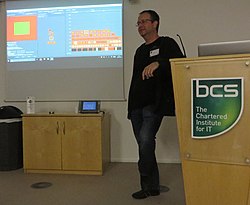
The Electronic Visualisation and the Arts conferences (EVA Conferences for short, aka Electronic Information, the Visual Arts and Beyond) are a series of international interdisciplinary conferences mainly in Europe, but also elsewhere in the world, for people interested in the application of information technology to the cultural and especially the visual arts field, including art galleries and museums. [1]

